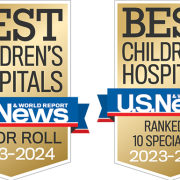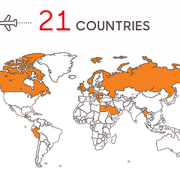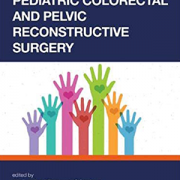Surgical home program for spinal fusion achieves long-term success

“Our primary goal was to improve the value of care for children with scoliosis and their families,” says Dr. Oetgen. “Even better, we’ve shown that this model can be used consistently over time to maintain the benefits it delivers to this patient population.”
“Creating an effective process that benefits patients, is sustainable long term and doesn’t increase costs is one of the most challenging parts of any new procedure, both in health care and beyond,” says Matt Oetgen, M.D., chief of Orthopaedic Surgery and Sports Medicine at Children’s National.
Dr. Oetgen’s team accomplished this feat when building the Children’s National Spinal Fusion Surgical Home. The team used LEAN process mapping at the outset to engage a broad group of care providers who established a collaborative environment that empowered and engaged everyone to take ownership over a new care pathway for every patient who undergoes posterior spinal fusion surgery at the hospital.
This unique model designed using proven business process development tools has allowed patients require fewer pain medications after surgery and have shorter stays in the hospital. Even better, the team has maintained the integrity of the pathway consistently over a longer period of time than any other pediatric spinal fusion care model to date.
“Our primary goal was to improve the value of care for children with scoliosis and their families,” says Dr. Oetgen, who was the study’s lead author. “Even better, we’ve shown that this model can be used consistently over time to maintain the benefits it delivers to this patient population.”
The team conducted a retrospective analysis of prospective data from all patients (213) undergoing posterior spinal fusion at Children’s National Health System from 2014 to 2017, a period of time that captures nearly one year before implementation of the new pathway and 2.5 years after implementation. The outcomes were reported in the Journal of Bone and Joint Surgery.
As pressure builds to increase the value of care, many hospital systems are trying standardized care pathways for many complex conditions, in an effort to decrease care variability, improve outcomes and decrease cost. Previous research has shown the effectiveness of a variety of standardized pathways with wide ranging goals for spinal fusion procedures, however, most published studies have focused only on the initial success of these pathways. This study is the first to look at the implementation over a period of 2.5 years to gauge whether the process and its effectiveness could be maintained long term.
The authors attribute physician buy-in across disciplines and strict adherence to pathway processes as key to the success of this model. In addition, the team created standardized educational procedures for onboarding new care providers and implemented standardized electronic order sets for both orthopaedic and anesthesia services to make the pathway easy to maintain with little deviation over time. Lean process mapping at the outset included a broad group of care providers who established a collaborative environment that empowered and engaged the entire team to take ownership over the new process.
“We used proven business models for culture change that were critical to the success of this program,” Dr. Oetgen says. “We’re proud of the model we have created and think it would work well in other pediatric hospitals with similar patient populations.”











